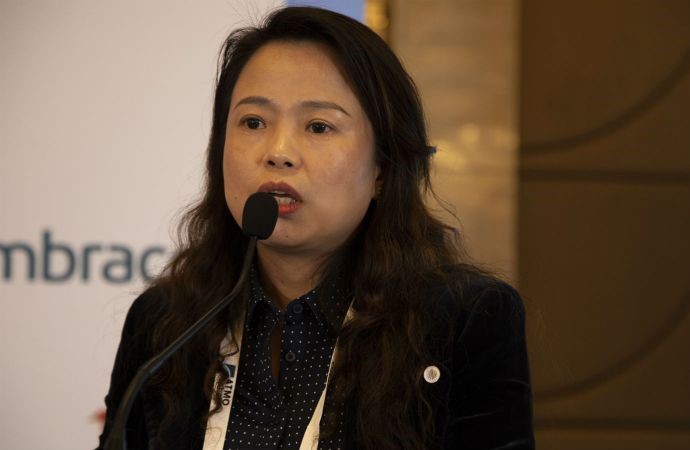A return to ammonia in China
July 12, 2019
The country is revising safety standards, focusing on training and considering new technology to overcome concerns stemming from major accidents.

It is safe to say that safety is the number one issue that comes up in regard to the future use of ammonia in industrial refrigeration in China. But it’s an issue that the country, under increasing pressure to phase out synthetic refrigerants, needs to address.
The situation is not being helped by local governments, which have unilaterally blacklisted ammonia following major accidents involving the gas in recent years. This, however, has only increased the determination of those who intend to lead China back towards a path where ammonia is used safely in industrial refrigeration.
This determination was articulated at the ATMOsphere China 2019 conference, held in Shanghai in April. (The conference was organized by shecco, publisher of Ammonia21.com.)
Leading associations and technology suppliers discussed updating and revising ammonia standards along with adopting cutting-edge low-charge ammonia and CO2 technologies.
During the ATMOsphere China’s „Safe Use of NH3in China’s Cold Chain“ session, Jin Ma, from the Chinese Association of Refrigeration (CAR), acknowledged two “huge accidents“ in 2013 involving ammonia-based refrigeration systems in China.
Ma serves as deputy director of the Cold Storage and Cold Processing Committee at CAR, the leading industrial refrigeration association in the country, which is responsible for the creation of safety standards and design codes.
The accidents, he said, were not related to the system itself. “Rather, the main problem [lay] in compliance to safety and design standards by employees.“ In any event, Ma said, the result was „a huge blow to the ammonia refrigeration industry in the country.“
In response, stakeholders at the conference agreed that an increased focus on safety standards and practices combined with more training of technicians, would be key to the return of ammonia use in the country.
Yifan Yang, deputy secretary general for CAR, noted that a number of the group’s industry safety standards and design codes have been or are being updated. For example, professional standard AQ 7015-2018, which has been in force since December 2018, includes several safety standards and specifications for ammonia refrigeration technology. Nine-year-old Chinese National Standard GB 50072-2010, described as a „code for the design of cold storage facilities,“ has recently been under revision.
Revisions include having more content on CO2 refrigeration systems and greater safety requirements for ammonia refrigeration systems. According to CAR, GB 50072-2010 is now in the final approval process, which is expected to be completed this year.
Finally, CAR has published a new group standard titled „Safety assessment methods for ammonia refrigerating systems“ (CAR2018-01), which will go into effect in June 2019.
While overseas suppliers are helping bring know-how and technology to China, the United Nations Development Programme (UNDP) has been focused on supporting technology transfer and capability at the local level. UNDP does this mainly by funding the local development of new technology and converting domestic production and manufacturing lines.
Yun Hong, representing China’s UNDP office, informed ATMOsphere China participants that, as of March 2019, they have conver ted a total of 33 production lines, with 20 of them now using natural refrigerants. In addition, Hong said that Chinese manufacturer Moon-Tech, with the UNDP, recently developed its new „GEPTR290/ CO2„ system aimed at „chemical process cooling“ applications where traditional water chilling units are used.
Though China has seen a big shift towards synthetic refrigerant use in industrial refrigeration in recent years, it seems this change is only temporary, with a return to ammonia on the horizon.


